Fokker DR.1 Triplane
Production Time 9 to 10 weeks
Shipment is by FedEx, UPS or DHL International Express Courier with a normal door-to-door delivery time worldwide of within 2-3 business days after dispatch. Due to the current volatility of world fuel prices, the amount mentioned here is our best estimate for DHL and UPS and may be subject to change at the time of shipping.

Model Description: Fokker DR.1 Triplane Wood Replica Scale Custom Model Aircraft
Manufacturer: Fokker
Wingspan: 17 Inches (43.2 Centimeters)
Height: 7 Inches (17.8 Centimeters)
Scale: 1:17
$249.50
Production Time 9 to 10 weeks
-
United States dollar ($)
-
Pound sterling (£)
-
Euro (€)
-
Australian dollar ($)
-
Canadian dollar ($)
-
Singapore dollar ($)
-
Swiss franc (CHF)
-
Japanese yen (¥)
-
Danish krone (kr.)
-
Hong Kong dollar ($)
-
Norwegian krone (kr)
-
Swedish krona (kr)
-
United Arab Emirates dirham (د.إ)
General Product Description
Our PlaneArts Fokker DR.1 Triplane model exhibits unique, unrivaled quality and detailed design to come as close as possible to the accuracy of the actual plane. It comes as standard with a robust, durable base or stand which is available in a variety of different finishes designed to match your own personal requirements including solid wood, wood with polished metal supports or adjustable wood wall mount and will be ready within about 9-10 weeks from placement of order.
The Fokker DR.1 Triplane model is made of the finest kiln dried renewable mahogany wood (commonly known as Lauan or Meranti) which has undergone many stages of carving and meticulous and careful sanding giving the beautiful, finished museum quality masterpiece. Many collectors and model connoisseurs demonstrate their preference for genuine handmade and hand painted mahogany wood models rather than plastic or die cast (diecast) alternatives due to the overall look and totally different feel of the item - we trust you will find the same. We can however, if required produce the same model in Solid Cast Resin so just click and contact us for further information. Our craftsmen and gifted artisans ensure that our finely handcrafted model airplanes match the precise blueprint details of the original aircraft. The paint scheme, markings and parts are closely matched, reflecting the original aircraft. This stylish top-quality desktop replica model will surely enthrall anyone who receives this as a gift and for sure one of the most appropriate and desirably collectable gifts for any military aviation enthusiast and avid aircraft collector whilst also displaying a perfect resemblance to the actual real life version.
There are many types of military propeller aircraft, but the basic types are bombers, fighters, fighter bombers, spotter planes, transporters, patrol aircraft, trainers, and reconnaissance and observation aircraft. All these types of aircraft are used for different types of missions. If you're a fan of historic or present-day military aviation, our model aircraft will bring the excitement and character of these aircraft right into your own home. You can order a wood airplane model of a North American B-25 Mitchell Bomber, a B17 - Flying Fortress, or a P-51 Mustang Nervous Energy V not forgetting the Bf 109, Spitfire, FW 190, A6M Zero, P-38 and F4U. These classic, propeller airplane models are of the highest quality. Each is individually crafted by our expert craftsmen. They produce handmade scale mahogany airplane models of the finest aircraft from World War I and II to present day biplanes and triplanes.
If you require, we can also make the Fokker DR.1 Triplane model in any other military, government or even private livery or colour scheme you require and if necessary, in a different size or scale. Just click here to contact us with a description or photographs of what you require, and we will let you have a quotation for the necessary customization by return email. We can also make bespoke scale replicas of any other private / civil commercial airliner or airliners, helicopter, glider, gliders with engines, military jet, warplane jets, biplane, triplane, tail fin, spacecraft, rocket or NASA model you require in any airline, military or civilian livery or colors. We also produce model airships, blimps, dirigibles, blimps, boats, and ship collectibles. Wall plaque or seal for military, government or private customers. Again, by clicking here to contact us just let us know exactly what you need.
Unveiling the Fokker Dr.1 Triplane: A Legend of the Skies
In the annals of aviation history, certain aircraft stand out as icons, not just for their performance or utility, but for their sheer charisma and distinctive design. One such aircraft is the Fokker Dr.1 Triplane, a World War I legend that captured the imagination of pilots and enthusiasts alike. Introduced in 1917, this German aircraft quickly gained fame for its agility, maneuverability, and unique three-wing design. Let’s delve into the key features that made the Fokker Dr.1 Triplane a standout among its contemporaries.
Distinctive Triplane Configuration:
The most striking feature of the Fokker Dr.1 is, of course, its triplane configuration. While biplanes were the norm during World War I, Fokker’s decision to adopt a triplane layout was driven by a quest for enhanced maneuverability and climb rate. The three wings, stacked vertically above one another, provided increased lift and reduced wing area, resulting in a higher climb rate and tighter turns compared to contemporary biplanes.
Agile and Maneuverable:
The agility of the Fokker Dr.1 is legendary. Pilots marveled at its ability to perform tight turns and rapid changes in direction, making it a formidable opponent in dogfights. The triplane configuration, coupled with its powerful rotary engine, endowed the Dr.1 with exceptional maneuverability, allowing it to outmaneuver many of its adversaries in the skies over the Western Front.
Rotary Engine Power:
At the heart of the Fokker Dr.1’s performance was its rotary engine. Unlike modern aircraft engines, which have a stationary crankshaft and rotating cylinders, rotary engines featured a stationary crankcase with the entire engine rotating around it. This design resulted in a high power-to-weight ratio and a characteristic “blip-blip” sound as the engine rotated. The Dr.1 was typically powered by the Oberursel UR.II rotary engine, which provided ample power for its relatively lightweight airframe.
Structural Strength:
Despite its lightweight construction, the Fokker Dr.1 was remarkably robust. Its wooden airframe, fabric-covered wings, and steel-tube fuselage were designed to withstand the rigors of aerial combat. Pilots appreciated the aircraft’s durability, which allowed them to push the limits of its performance without fear of structural failure.
Climbing Ability:
One of the key advantages of the Fokker Dr.1’s triplane configuration was its exceptional climbing ability. The three wings provided ample lift, allowing the aircraft to rapidly ascend to higher altitudes where it could gain a tactical advantage over its adversaries. This climbing prowess made the Dr.1 a favorite among German pilots who valued altitude as a means of securing superiority in aerial combat.
Legacy and Influence:
Although the Fokker Dr.1 was introduced relatively late in World War I and saw limited production compared to other aircraft of the era, its impact was profound. Pilots such as Manfred von Richthofen, better known as the “Red Baron,” achieved numerous victories flying the Dr.1, cementing its reputation as a fearsome adversary. The distinctive silhouette of the triplane became synonymous with German air power during the war and continues to captivate aviation enthusiasts to this day.
In conclusion, the Fokker Dr.1 Triplane remains a cherished icon of aviation history, revered for its agility, maneuverability, and distinctive design. Its legacy endures as a testament to the ingenuity and innovation of the pioneers of early aviation.
| Weight | 6 kg |
|---|---|
| Dimensions | 13.6 × 17 × 7 in |

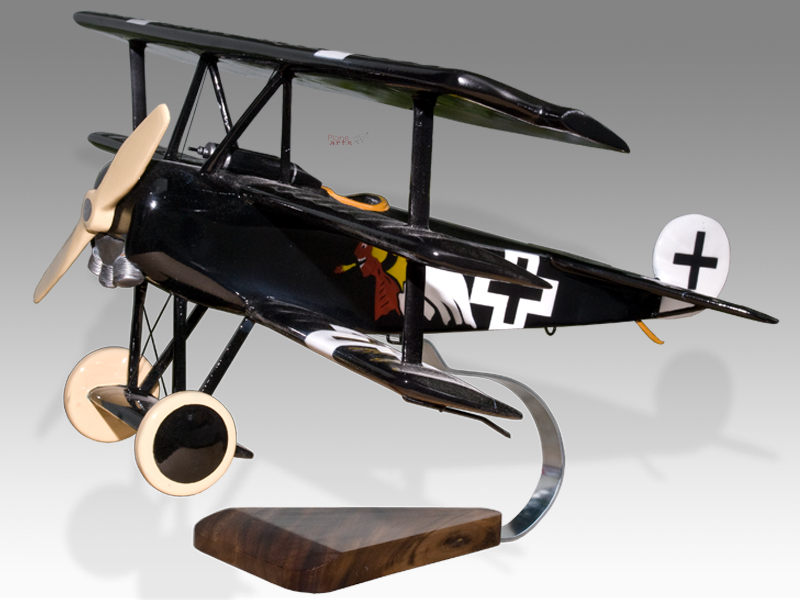
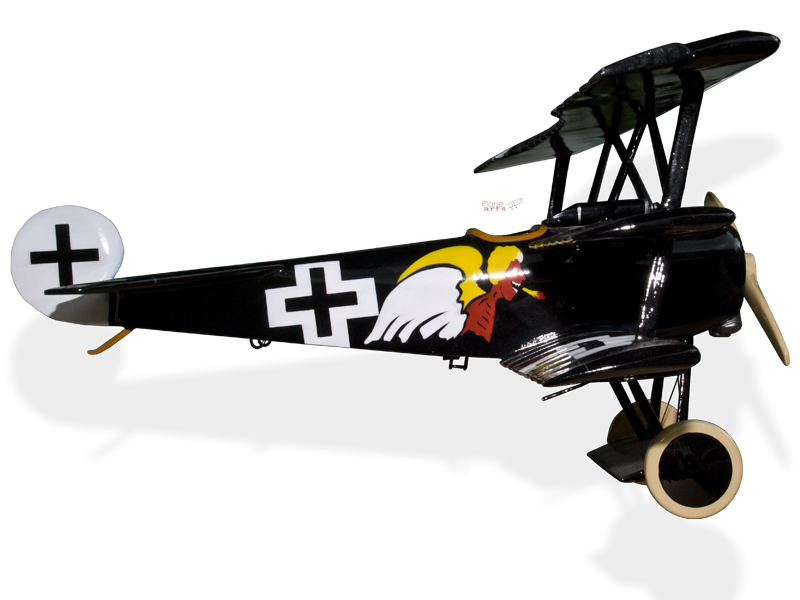
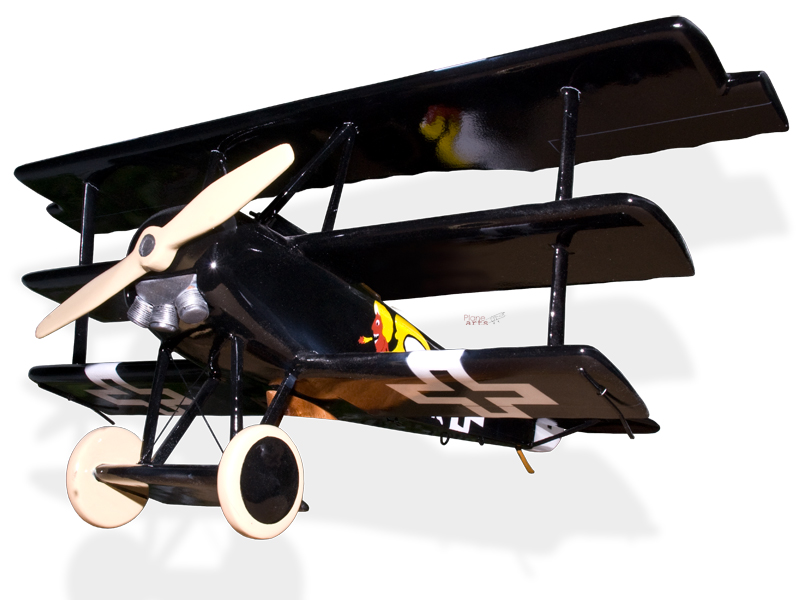
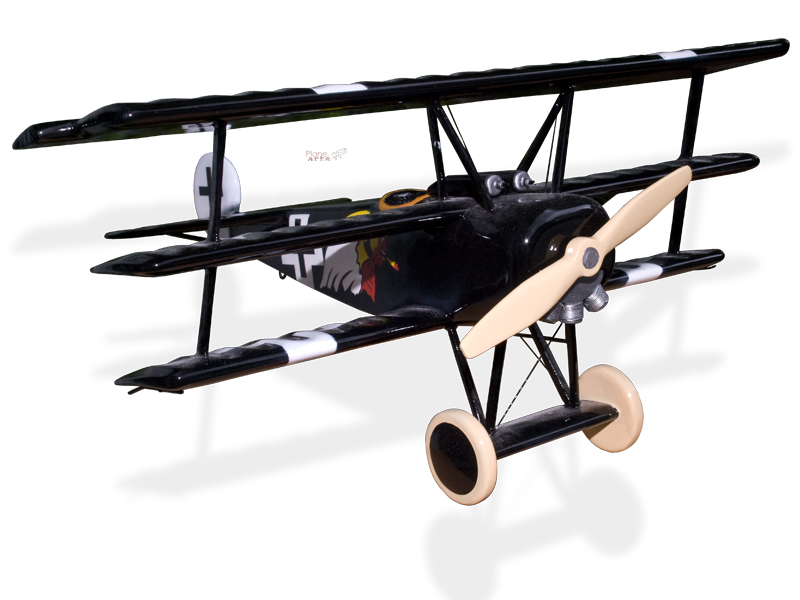

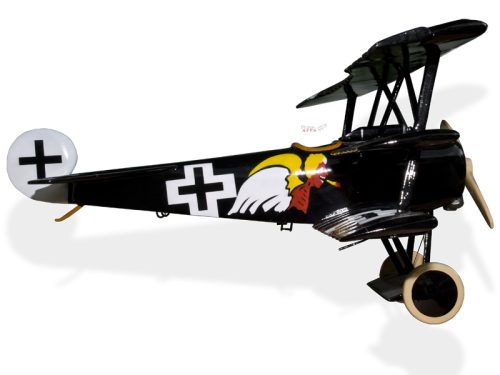
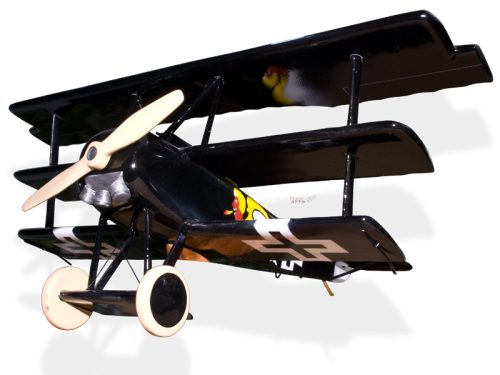
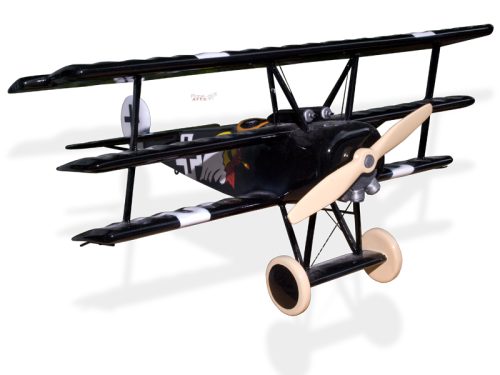

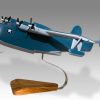
Reviews
There are no reviews yet.